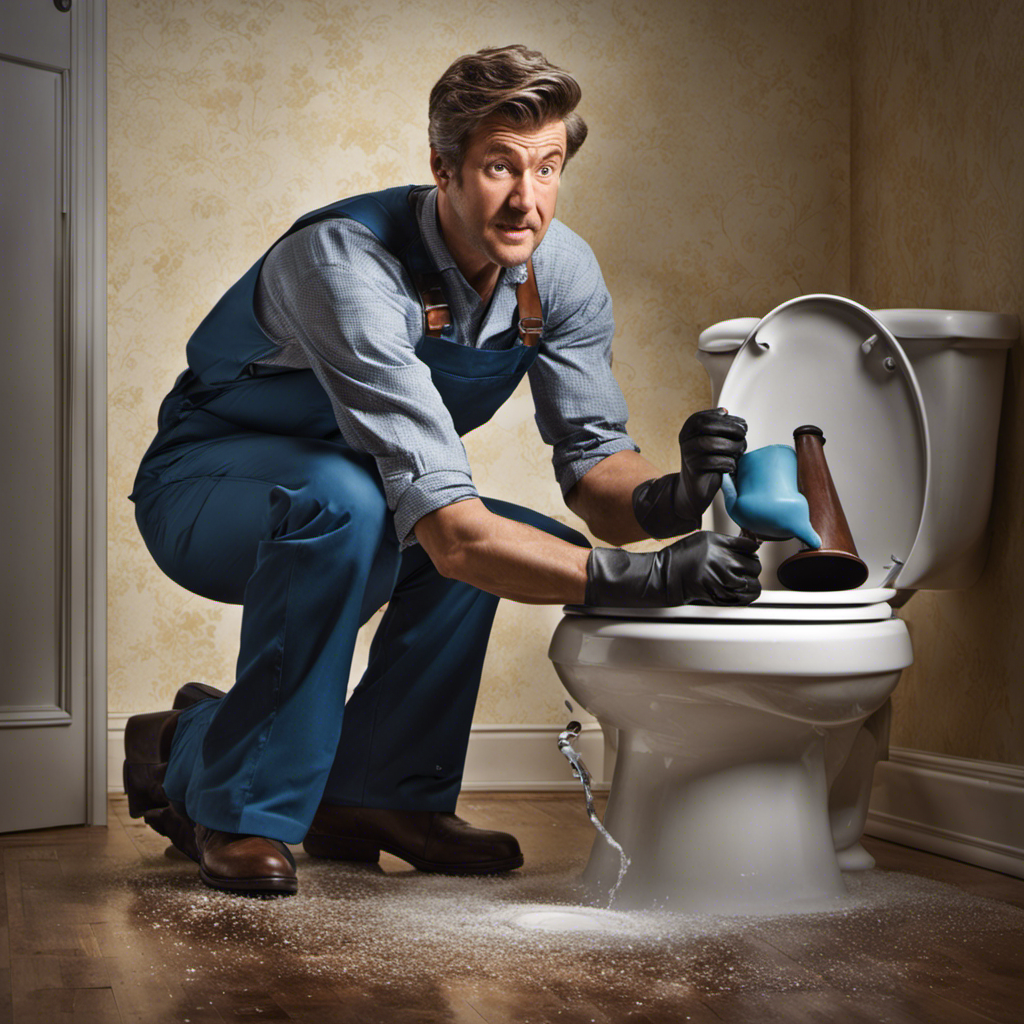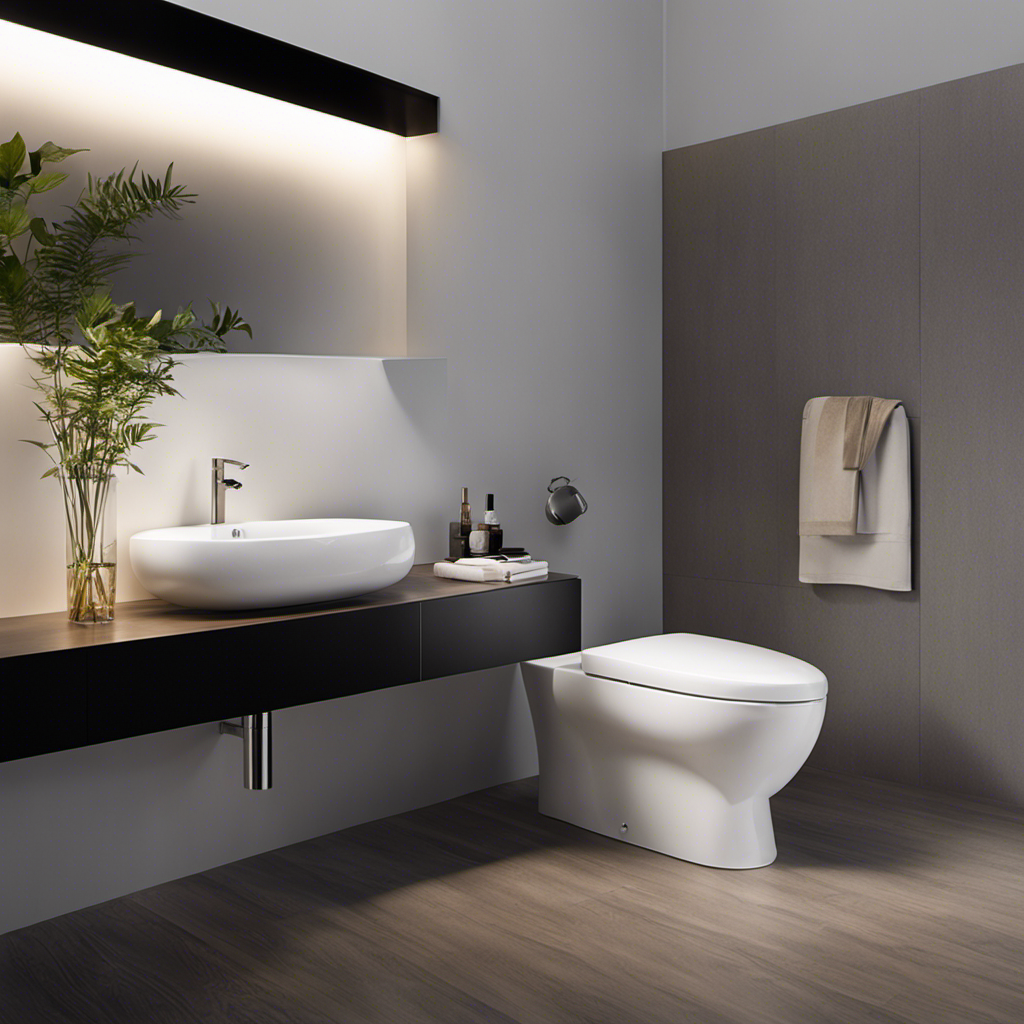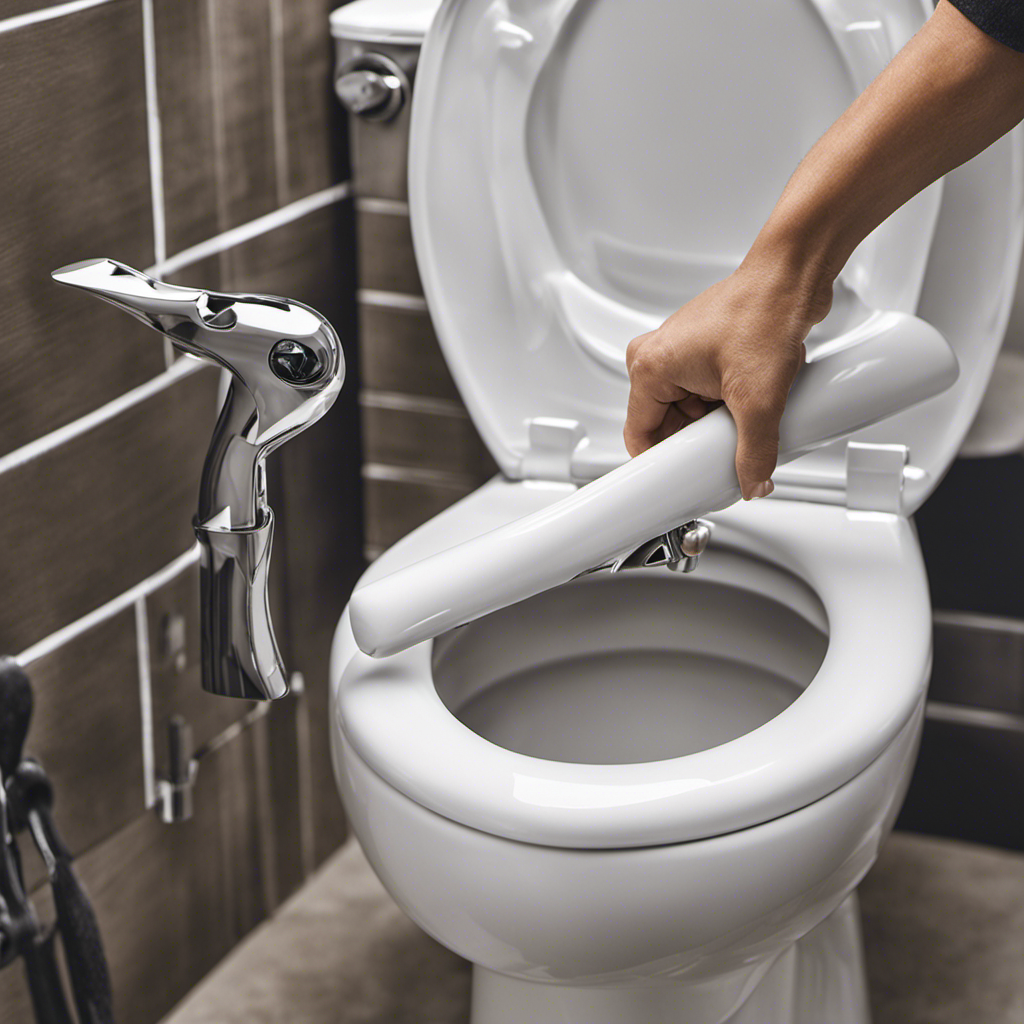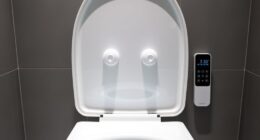I’ve been there before – standing in the bathroom, staring at a clogged toilet with frustration mounting. It’s a situation no one wants to deal with, but it happens to the best of us.
That’s why I’ve put together this comprehensive guide on what to do for a clogged toilet. From common causes to essential tools, step-by-step instructions, and even preventative measures, I’ll walk you through everything you need to know to tackle this plumbing problem like a pro.
Key Takeaways
- Flushing large amounts of toilet paper at once can lead to blockages in your plumbing system.
- Avoid flushing items like sanitary products, wipes, or paper towels.
- Use a plunger or toilet auger to clear minor or stubborn clogs.
- Schedule regular plumbing inspections to address potential issues.
Common Causes of Toilet Clogs
One common cause of toilet clogs is flushing large amounts of toilet paper at once. While it may seem convenient to flush everything in one go, this can lead to blockages in your plumbing system.
To prevent toilet clogs, it is important to be mindful of the amount of toilet paper you flush at a time. It is recommended to flush smaller amounts and give the toilet time to clear before flushing again. Additionally, avoid flushing items that are not meant to be disposed of in the toilet, such as sanitary products, wipes, or paper towels.
Signs of a clogged toilet include water rising to the rim when you flush, slow drainage, or a gurgling sound.
Essential Tools for Unclogging a Toilet
To effectively unclog a toilet, you’ll need a plunger and a toilet auger. These essential tools are designed specifically to tackle stubborn toilet clogs.
Here are three key items to have on hand for unclogging a toilet:
-
Plunger: A plunger is a must-have tool for every household. It creates suction and pressure to dislodge clogs in the toilet drain. Make sure to choose a plunger with a flange, as it provides a better seal and increases effectiveness.
-
Toilet Auger: A toilet auger, also known as a closet auger, is a specialized tool designed to tackle more stubborn clogs. It has a long, flexible cable that can reach deeper into the toilet drain to break up and remove blockages.
-
Chemical Drain Cleaner (optional): In some cases, a chemical drain cleaner can be used as a last resort. However, it is important to use them cautiously and follow the instructions carefully, as they can be harmful to both your plumbing and the environment.
With these essential tools at your disposal, you’ll be prepared to tackle any toilet clog with confidence. Now, let’s move on to a step-by-step guide to plunging a clogged toilet.
Step-by-Step Guide to Plunging a Clogged Toilet
Start by positioning the plunger over the drain hole, making sure it creates a good seal. This is an essential step in unclogging a toilet effectively.
Toilet clogs can be a frustrating and inconvenient problem, but with the right techniques, you can easily tackle them yourself. Prevention is always the best approach when it comes to toilet clogs. Regular maintenance and proper usage can help prevent clogs from occurring in the first place.
However, if you do find yourself dealing with a clogged toilet, plunging is the most common and effective DIY technique. By creating a seal with the plunger and applying firm, rhythmic pressure, you can dislodge the blockage and restore proper flow.
Remember to use a plunger specifically designed for toilets, as it has a flange that creates a better seal.
Alternative Methods to Unclog a Toilet
If you’re looking for alternative methods to unclog your toilet, using a plumbing snake can be an effective option.
Here are three other toilet unclogging hacks and natural remedies for clogged toilets that you can try:
-
Baking Soda and Vinegar: Start by pouring one cup of baking soda into the toilet bowl. Then, slowly add one cup of vinegar. Let the mixture sit for about 30 minutes, allowing it to fizz and break down any blockages. Finally, flush the toilet to see if the clog has cleared.
-
Hot Water and Dish Soap: Boil a pot of water and add a few tablespoons of dish soap. Carefully pour the hot water into the toilet bowl and let it sit for a few minutes. The heat and soap can help break down the clog, making it easier to flush away.
-
Wire Hanger: Straighten out a wire hanger and create a small hook on one end. Insert the hooked end into the toilet drain and gently maneuver it around to dislodge any obstructions. Be careful not to scratch the porcelain. Once the clog is loosened, flush the toilet to clear the blockage.
Preventing Future Toilet Clogs
To prevent future clogs, you should make sure to only flush toilet paper and waste down the toilet. Avoid flushing items such as wet wipes, feminine hygiene products, or cotton balls, as they can easily cause blockages in your plumbing system.
Regular toilet maintenance is essential to keep your toilet functioning properly. Here are some tips for avoiding toilet blockages:
-
Use a plunger to clear minor clogs. Apply firm and rapid pressure to create suction and dislodge the blockage.
-
Install a toilet auger or snake for more stubborn clogs. Insert the tool into the toilet drain and twist it to break up the obstruction.
-
Schedule regular plumbing inspections to identify and address potential issues before they become major problems.
Proper toilet maintenance and following these tips will help keep your toilet running smoothly and prevent future clogs.
Frequently Asked Questions
What Are Some Signs That Indicate a Toilet Is About to Clog?
When it comes to toilet clog prevention, it’s important to be aware of the signs of a potential blockage. Some indicators include slow drainage, gurgling sounds, and water rising to the rim.
Can Using Too Much Toilet Paper Cause a Clog?
Using too much toilet paper can definitely cause a clog. It’s important to be mindful of how much you’re using. Consider alternatives like bidets or wet wipes to prevent future clogs.
Are There Any Specific Household Items That Should Never Be Flushed Down the Toilet?
There are certain household items that should never be flushed down the toilet. Flushing items like paper towels, diapers, or feminine hygiene products can cause clogs and potential plumbing issues.
How Can I Prevent My Toilet From Clogging in the Future?
To avoid toilet clogs, I make sure to only flush toilet paper and waste. I also regularly clean my toilet and use a plunger if needed. It’s important to be mindful of what goes down the drain to prevent future clogs.
What Should I Do if the Plunger Doesn’t Work to Unclog the Toilet?
If the plunger doesn’t work to unclog my toilet, I can try alternative methods like using a toilet auger or a mixture of hot water and dish soap. If all else fails, I may need to seek professional assistance.
Conclusion
In conclusion, tackling a troublesome toilet clog can be a daunting task, but fear not! Armed with the right tools and techniques, you can triumph over this toilet trouble.
By plunging with precision, employing alternative methods, and taking preventive measures, you can restore harmony and happiness to your bathroom.
So remember, be bold, be brave, and banish those pesky clogs for good!










